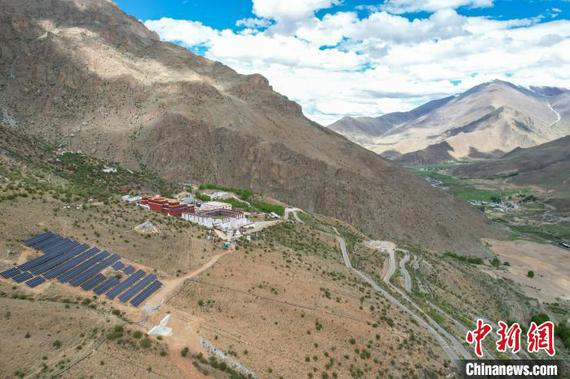Nailang Monastery in Lhasa, capital of Xizang Autonomous Region, has become the first monastery in the region to achieve carbon neutrality by establishing a photovoltaic power station with an integrated solar-storage-charging system.
Nailang Monastery is located on a mountainside in Gurong Town, Lhasa, at an altitude of more than 4,200 meters. With a history of over 700 years, the monastery belongs to the Karma Kagyu school of Tibetan Buddhism.

Aerial view of the Nailang Monastery solar power station in Lhasa on May 29, 2025. (Photo China News Service/Jiang Feibo)
Bawo Rinpoche told China News Service these charging hubs use electricity generated by the monastery’s solar power station. Tourists and devotees who arrive in new energy vehicles can charge their cars for free.
He added that the monastery adopted advanced technology to assess the main sources of carbon emissions in the monks’ daily life. Based on the results, it carried out electrification upgrades to reduce its environmental impact.
Lunch was made entirely with electric appliances, helping save energy and reduce emissions, it was noted.
According to Ciren Qudan from the Nailang Ecological and Cultural Protection Center, the monastery's solar power station covers 2,500 square meters and generates about 1 million kilowatt-hours of electricity annually. It is equipped with an integrated system that includes five energy storage cabinets, allowing for off-grid operation for up to a week.
In 2024, the solar power station was connected to the grid, enabling surplus clean energy to be fed into the power system.
